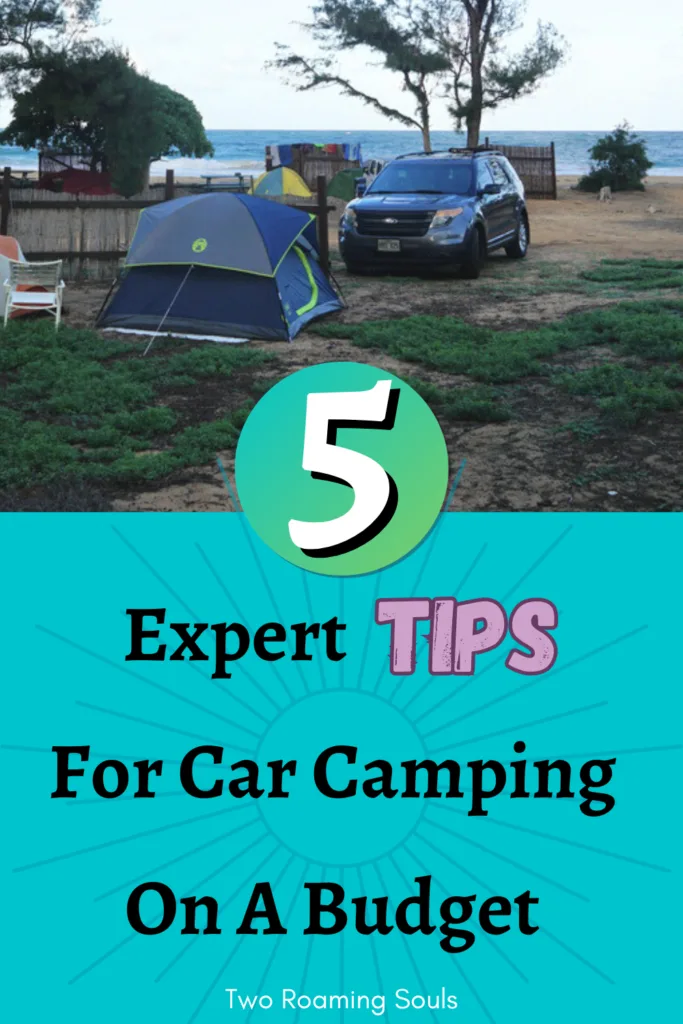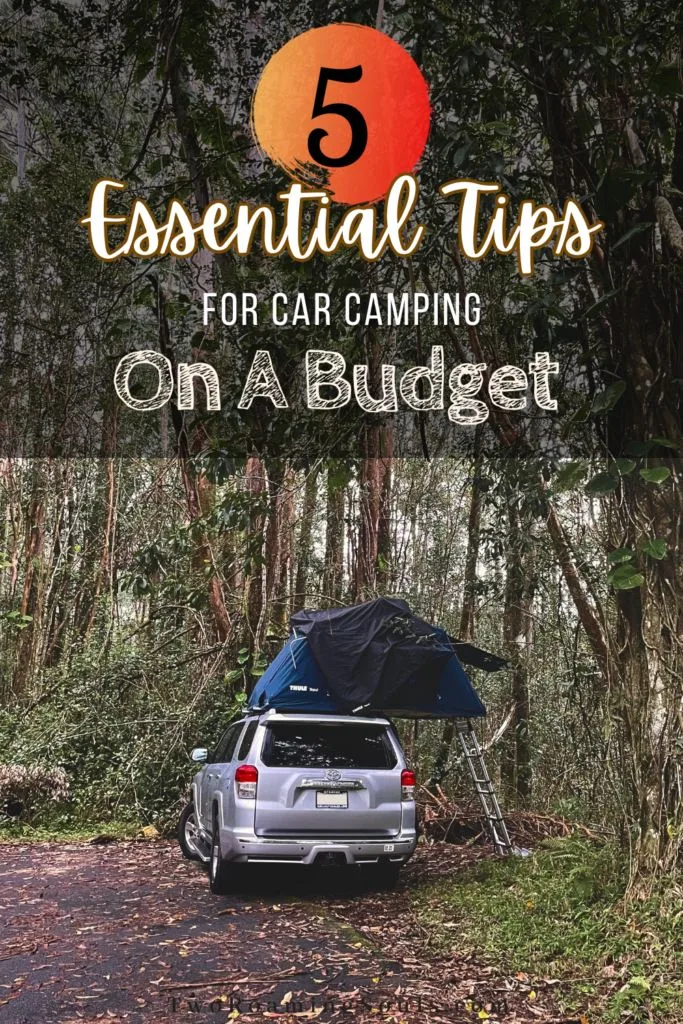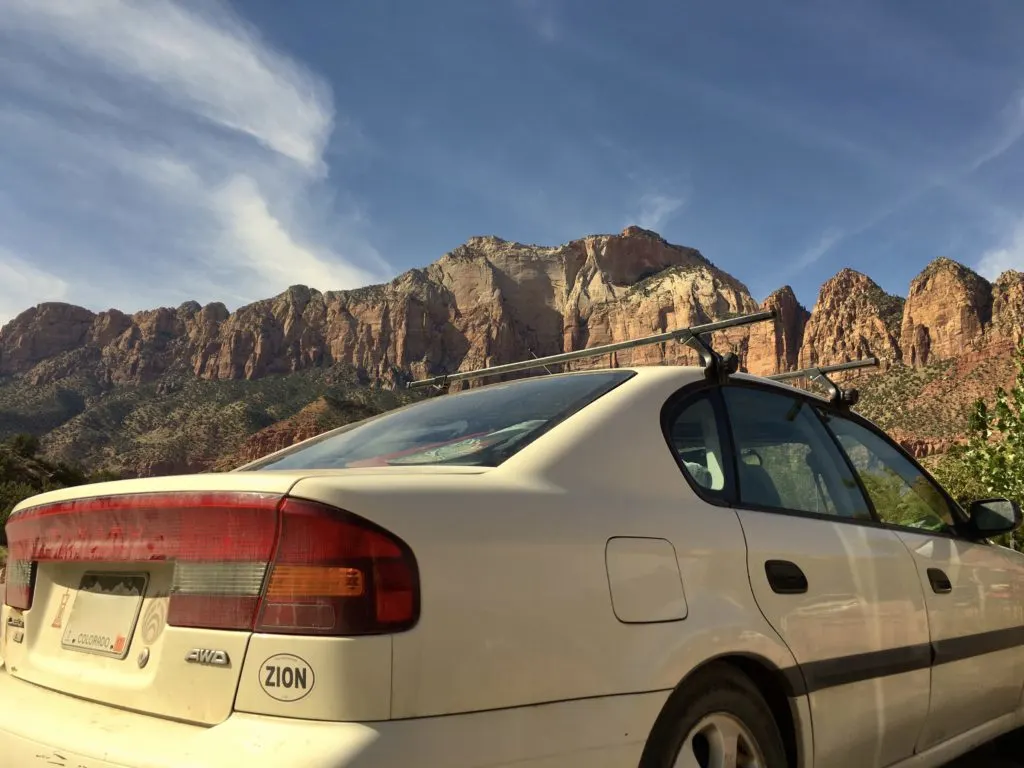
Car camping can be one of the cheapest ways to explore the great outdoors on a budget. Rather than shelling out big money on hotels or rentals, you can save big by car camping instead.
All you need is a car and a few camping essentials to get started. When Jake and I first started to travel, we would go on little car camping adventures to anywhere within driving distance. We can help you master the art of car camping to travel for cheap. Here are our 5 great tips for car camping on a budget.
This post may contain affiliate links. Disclosure policy.
1. Use websites or apps to find free camping near you:
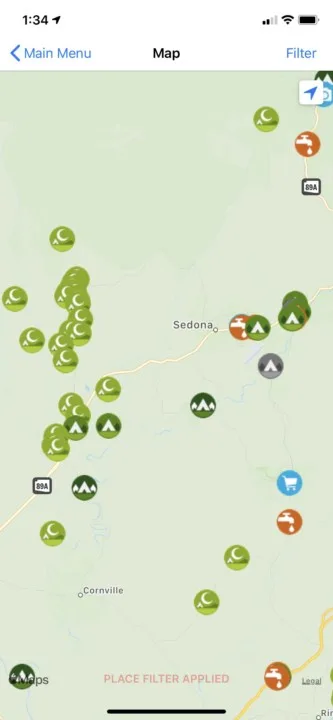
We use the website freecampsites.net or the app iOverlander to find free camping in the areas we travel. The site shows both free and paid campsites (but we try to avoid paid ones).
Most free campsites we stay at are “primitive,” meaning no facilities (no bathrooms, showers, drinking water, fire pit, picnic tables, etc). These campsites are usually on BLM (Bureau of Land Management) or public land that is free to use as long as you follow some simple rules.
If you are completely new to primitive camping, read our beginner’s guide to boondocking.
When using the website or app, you can click on each campsite to learn about the specific site and get directions. It’s a good idea to take screenshots of information in case you lose cell service (which is often in many of these primitive camping locations).
Pay attention, because some sites require a high-clearance vehicle. Take note of how many individual campsites there are at a given location because you might not get your first choice. Weekends and holidays are always busiest, so have a backup plan in case all the spots are taken.
And as always follow Leave No Trace principles. These free camping areas are a privilege, and if we take advantage of these areas they can easily be shut down and taken away from us. So please do you part and pack it in, pack it out.
2. Cook Your Own Meals
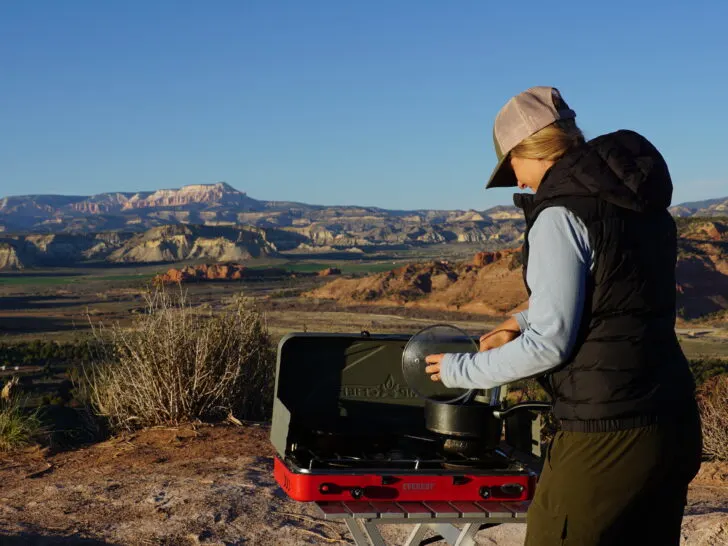
For food, try to limit going out to eat or buying groceries in small towns as they are often more expensive.
Pack food that is cheap and doesn’t need refrigeration like trail mix, rice/pasta sides, ramen, granola bars, apples, oatmeal, etc.
3. Try to find free firewood
If you want to have a fire every night to cook or just to stay warm, buying small bundles for $5+ dollars a pop can add up. Always be on the lookout for free firewood signs. Or check Craigslist because often when people cut down trees on their property they offer it free of charge if you pick it up.
4. Buy A National Parks Pass:
If you plan to go to 3 or more National Parks in a year, buy an America The Beautiful National Parks Pass. It will pay off in just 3 visits. An annual national parks pass in the US is one of the best values to see the nation’s most beautiful natural wonders.
Some of our most cherished travel memories are from our visits to National Parks.
5. Build your camping kit slowly:
If you start a new hobby, it’s easy to feel overwhelmed by all the gear you feel pressured to buy.
But really, you should just start with the bare essentials, and only build out your kit slowly. Only spend up on the important gear once you decide what is important to you. For us, that means a quality tent, sleeping bags, and sleeping pads, but we didn’t start off that way.
Jake and I started with a very basic Kelty Tent which honestly treated us great for years, until we got more into backpacking. Therefore, we have since upgraded to the ultralight Big Agnes Copper Spur UL3.
We both had moderate sleeping bags to start, but later sold them to upgrade to the Mens REI Magma 15 and the Womens Marmot Osprey 0. If there is one thing I don’t think you should skimp on is your sleeping bag, because being warm throughout the night means a better night’s rest.
We just sleep on a cheap Intex Classic Downy Airbed, and it’s way more comfortable than sleeping pads that can cost a hundred dollars more. If you have a bigger budget for a nicer air mattress then we suggest the Lightspeed Outdoors air mattress.
But it’s okay to start off cheap or find used gear. This can help you decide if camping is truly a hobby and what kind of gear you might want to upgrade to later.
My other favorite places to be cheap are: coolers, chairs, clothes, cooking equipment, lights, to name a few. Some people might be fine with a cheap tent, but can’t live without a 2-burner camp-stove.
Be honest about YOUR needs, it’s better to add expensive gear once you know you need it, than to have sunk a bunch of money into gear someone told you to buy.
You can find great deals on used gear on Craigslist, Ebay, and Facebook marketplace. Or for low prices on new gear, check out The Clymb, Steep and Cheap, Backcountry, REI Garage, Cabela’s Bargain Cave, and even Walmart has a decent selection of camping items.
And why not earn cash back while you’re doing a little shopping? Rakuten is a free browser plugin that gives you cash back for free with a single click!
Share These ‘Top 5 Tips For Car Camping On A Budget’ On Pinterest!
